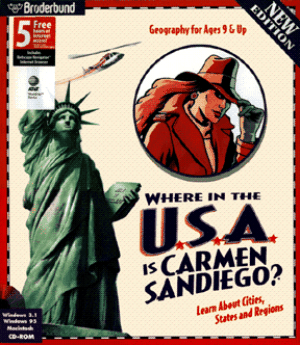
Adobe Flash is a discontinued multimedia software platform used for production of animations, rich internet applications, desktop applications, mobile apps, mobile games, and embedded web browser video players.
Autodesk 3ds Max, formerly 3D Studio and 3D Studio Max, is a professional 3D computer graphics program for making 3D animations, models, games and images. It is developed and produced by Autodesk Media and Entertainment. It has modeling capabilities and a flexible plugin architecture and must be used on the Microsoft Windows platform. It is frequently used by video game developers, many TV commercial studios, and architectural visualization studios. It is also used for movie effects and movie pre-visualization. 3ds Max features shaders, dynamic simulation, particle systems, radiosity, normal map creation and rendering, global illumination, a customizable user interface, and its own scripting language.

Windows Movie Maker is a discontinued video editing software program by Microsoft. It was first included in Windows Me on September 14, 2000, and in Windows XP on October 25, 2001. It later became a part of the Windows Essentials software suite, and offered the ability to create and edit videos as well as to publish them on OneDrive, Facebook, Vimeo, YouTube, Windows Live Groups, and Flickr. It is comparable to Apple's iMovie.
In visual effects, match moving is a technique that allows the insertion of 2D elements, other live action elements or CG computer graphics into live-action footage with correct position, scale, orientation, and motion relative to the photographed objects in the shot. It also allows for the removal of live action elements from the live action shot. The term is used loosely to describe several different methods of extracting camera motion information from a motion picture. Also referred to as motion tracking or camera solving, match moving is related to rotoscoping and photogrammetry. Match moving is sometimes confused with motion capture, which records the motion of objects, often human actors, rather than the camera. Typically, motion capture requires special cameras and sensors and a controlled environment. Match moving is also distinct from motion control photography, which uses mechanical hardware to execute multiple identical camera moves. Match moving, by contrast, is typically a software-based technology, applied after the fact to normal footage recorded in uncontrolled environments with an ordinary camera.

Kid Pix is a bitmap drawing program designed for children. Originally created by Craig Hickman, it was first released for the Macintosh in 1989 and subsequently published in 1991 by Broderbund. Hickman was inspired to create Kid Pix after watching his son Ben struggle with MacPaint, and thus the main idea behind its development was to create a drawing program that would be very simple to use.

Daz Studio is a free media design software developed by Daz 3D. Daz Studio is a 3D scene creation and rendering application that can be used to produce images and videos. Renders can be done by leveraging either the 3Delight render engine, or the Iray render engine, both of which are included for free with Daz Studio, or with a variety of purchasable add-on render engine plugins for Daz Studio from various vendors and companies.

Clip Studio Paint, informally known in Japan as Kurisuta (クリスタ), is a family of software applications developed by Japanese graphics software company Celsys. It is used for the digital creation of comics, general illustration, and 2D animation. The software is available in versions for macOS, Windows, iOS, iPadOS, Android, and ChromeOS.

DrawPlus was a 2D vector graphics editor and animation software developed by the UK-based software company Serif, also responsible for PhotoPlus, PagePlus, WebPlus, Digital Scrapbook Artist, Affinity Designer, Affinity Photo and other titles.
RPG Maker, known in Japan as RPG Tsukūru, is a series of programs for the development of role-playing video games (RPGs) with story-driven elements, created by the Japanese group ASCII, succeeded by Enterbrain, and then by Gotcha Gotcha Games. The Japanese name, Tsukūru, is a pun mixing the Japanese word tsukuru (作る), which means "make" or "create", with tsūru (ツール), the Japanese transliteration of the English word "tool".

Pivot Animator is a freeware application that allows users to create stick-figure and sprite animations, and save them in the animated GIF format for use on web pages and the AVI format.
Messiah is a 3D animation and rendering application developed by pmG Worldwide. It runs on the Win32 and Win64 platforms. It is marketed to run on Mac OS X and Linux via Wine. Messiah's fourth version, messiah:studio was released April 2009 and version 5.5b as messiah:animate was released November 2006. messiahStudio6 was released in April 2013. Messiah seems no longer maintained since 2013 (abandoned).
Shade 3D is a 3D modeling, rendering, animation, 3D printing computer program developed by e frontier Japan and published by Mirye Software. In October 2013, Shade 3D development team formed a new company called Shade3D Co., Ltd., and continue to develop and market the program. After terminating the sales agreement with e frontier Japan and Mirye Software by the end of December 2014, Shade3D company is now developing and marketing Shade 3D products in Japan and worldwide exclusively.
iClone is a real-time 3D animation and rendering software program. Real-time playback is enabled by using a 3D videogame engine for instant on-screen rendering.

ActivePresenter is 3-in-1 screencasting, video editing and eLearning authoring software program developed by Atomi Systems and designed for educators. It is available for Microsoft Windows and macOS.

Where in the World Is Carmen Sandiego? is a 1996 video game part of the Carmen Sandiego franchise. It was the third version of the game, after the 1985 original title of the same name and a 1992 Deluxe version of said game. The game's release coincided on the heels of the end of the PBS game show, and features QuickTime videos of Lynne Thigpen reprising her role as "The Chief". This was the last version of the game to follow the "classic" formula of the series, but much of the game, especially the "warrant" portion, was heavily redesigned. The Deluxe Edition released in 1998 added speech welcoming the player to each country and an "ACME Global Language Link-Up" satellite which quizzed the user on the local language. Players also received a spy watch and "an introduction to 12 foreign languages".

The remake version of Where in the U.S.A. Is Carmen Sandiego? was released in 1996 by Windows and Macintosh and features Lynne Thigpen playing "The Chief" from the World game show. The game's opening credits finds Carmen Sandiego arriving in her underground V.I.L.E. outpost in Washington, D.C., as she and RoboCrook plan to steal America's greatest treasure from each of the 50 states. Carmen later contacts each of her 39 V.I.L.E. operatives telling them to begin their missions.
Reallusion is a 2D and 3D character creation and animation software developer with tools from cartoon characters to digital humans and animation pipelines for films, real-time engines, video games, virtual production, archvis.

Mixamo Inc. is a 3D computer graphics technology company. Based in San Francisco, the company develops and sells web-based services for 3D character animation. Mixamo's technologies use machine learning methods to automate the steps of the character animation process, including 3D modeling to rigging and 3D animation.

Art of Illusion is a free software, and open source software package for making 3D graphics.








